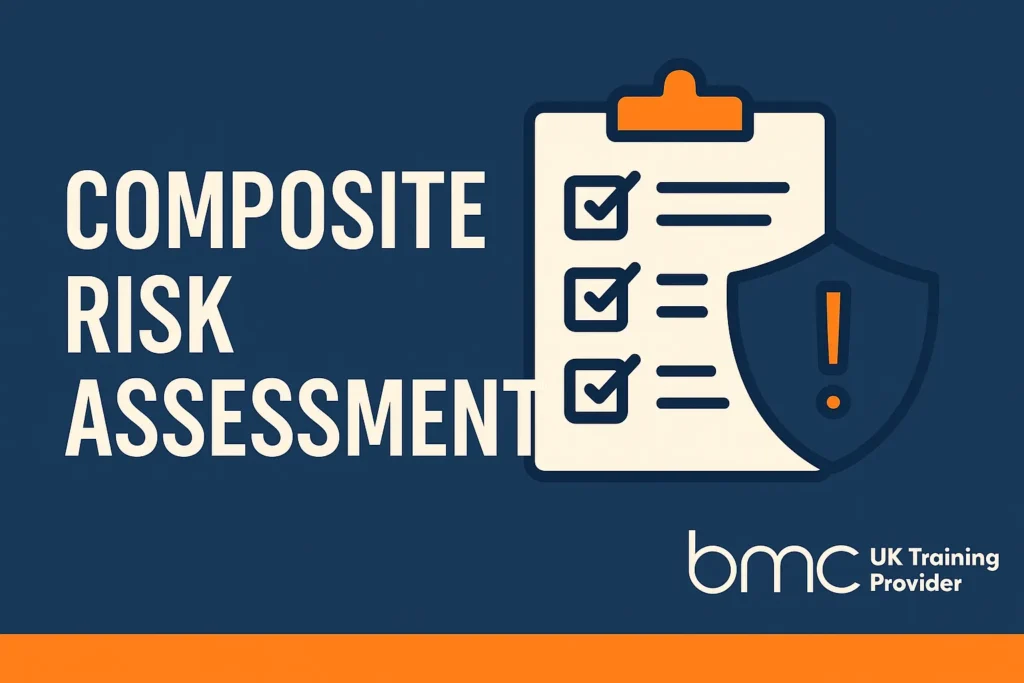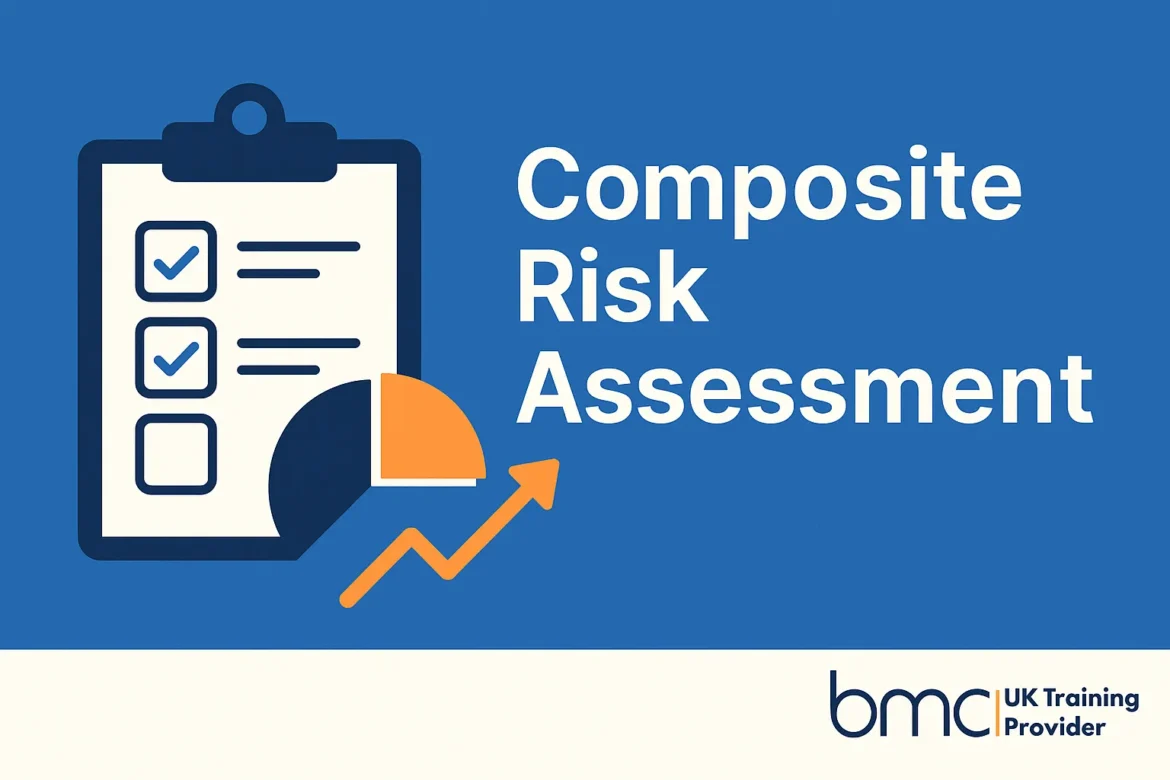In today’s complex business landscape, risk isn’t a single, isolated threat. It’s a web of interconnected factors that, when combined, can create a far greater impact than the sum of their parts. A composite risk assessment goes beyond traditional, siloed analysis to provide a holistic view of potential threats. It’s the difference between seeing individual trees and understanding the entire forest.
This article will serve as your comprehensive guide to understanding and implementing composite risk assessment. We’ll explore its core principles, benefits, and practical application, ensuring you’re equipped to make smarter, more informed decisions in an unpredictable world.
What Exactly Is a Composite Risk Assessment?
A composite risk assessment is a strategic and systematic process used to evaluate the overall risk exposure of an organization, project, or system by considering the combined effect of multiple individual risks. Unlike a simple checklist that assesses each risk in isolation, this method analyzes how various risks interact, overlap, and amplify one another. It focuses on the cumulative impact, providing a more accurate and comprehensive picture of potential vulnerabilities.
For example, a traditional assessment might identify a cybersecurity vulnerability and a supply chain disruption as two separate, moderate risks. A composite assessment would evaluate how a cyberattack on a supplier’s logistics system could simultaneously halt production and expose sensitive customer data, creating a high-impact, systemic failure.
Why Is Composite Risk Assessment Crucial for Modern Management?
The world is more interconnected than ever, and traditional risk management models are often insufficient. Here’s why adopting a composite approach is no longer optional:
- It Reveals Hidden Vulnerabilities: By looking at the bigger picture, composite assessment uncovers synergistic risks—where the combination of two low-impact risks creates a high-impact event.
- It Enables Better Strategic Decision-Making: When you understand the full spectrum of potential threats, you can allocate resources more effectively. You can prioritize investments in areas that mitigate the most complex and interconnected risks, rather than just the most obvious ones.
- It Improves Resilience and Agility: A holistic view of risk allows an organization to build more robust systems and response plans. This makes the business more resilient to unforeseen crises and more agile in adapting to changing circumstances.
- It Enhances Stakeholder Trust: Demonstrating a deep understanding of complex risks builds confidence with investors, regulators, and customers, proving that your organization is proactive and well-prepared.
Read Also : Composite Risk Management Meaning: A Complete Guide for Modern Leaders
How to Conduct a Composite Risk Assessment
The process of conducting a composite risk assessment is methodical and requires collaboration across departments. While the specific steps may vary, a general framework includes:
- Identify Individual Risks: Begin by identifying all potential risks within your domain, from financial and operational to environmental and reputational.
- Analyze Risk Interdependencies: This is the critical step. Use risk mapping techniques to visualize how one risk can trigger another. For example, a market downturn (financial risk) could lead to budget cuts (operational risk), which in turn could delay a critical software update (cybersecurity risk).
- Quantify the Combined Impact: Develop a scoring system to evaluate the cumulative effect of interconnected risks. This can involve both quantitative (financial loss) and qualitative (reputational damage) metrics.
- Develop a Mitigation Strategy: Create a comprehensive plan that addresses not just individual risks, but the interconnected pathways between them.
- Monitor and Adapt: Risk is dynamic. Continuously monitor your risk landscape and update your assessment as new threats emerge or existing ones change.

Key Questions to Ask When Performing a Composite Risk Assessment
-
When should a composite risk assessment be conducted?
- During Strategic Planning: Before launching a new project, entering a new market, or implementing major organizational change.
- Following a Major Incident: To understand the cascading failures and prevent similar events in the future.
- Annually or Bi-annually: As a standard part of your enterprise risk management (ERM) framework.
-
What’s the difference between Composite Risk and Cumulative Risk?
- Composite Risk refers to the combined, interactive effect of multiple risks. It’s about synergy and how risks amplify each other.
- Cumulative Risk refers to the simple, additive effect of a single risk repeated over time. For example, the repeated exposure to a harmful substance.
- Analogy: A composite risk is like a domino effect where each falling domino hits multiple others, while cumulative risk is like filling a bucket drop by drop.
FAQs About Composite Risk Assessment
Q1: Is composite risk assessment only for large corporations?
A: No. While it’s common in large organizations, the principles are scalable and applicable to businesses of all sizes, especially those operating in complex or rapidly changing environments.
Q2: What tools are used for a composite risk assessment?
A: Tools can range from simple spreadsheets and risk matrices to advanced risk management software and data analytics platforms that model interdependencies.
Q3: What is the biggest challenge in doing a composite risk assessment?
A: Identifying and accurately quantifying the interdependencies between risks. It requires a deep understanding of the business and robust collaboration between different departments.
About BMC Training
At BMC Training, we empower professionals to navigate the complexities of the modern business world. Our premier management and leadership courses are designed to equip you with the practical skills needed to excel in your career. We offer a comprehensive catalogue of courses covering vital disciplines from business strategy and project management to human resources and finance. Our industry-recognized certifications will provide you with the tools to drive success and make a lasting impact.
Invest in your professional development with BMC Training today! Explore our course catalogue to find the perfect fit for your career goals. Contact us now to learn how our training can transform your future.
Read Also : The Complete Guide to Leadership Development Training
How to Choose Training Provider: Tips You Must Know


